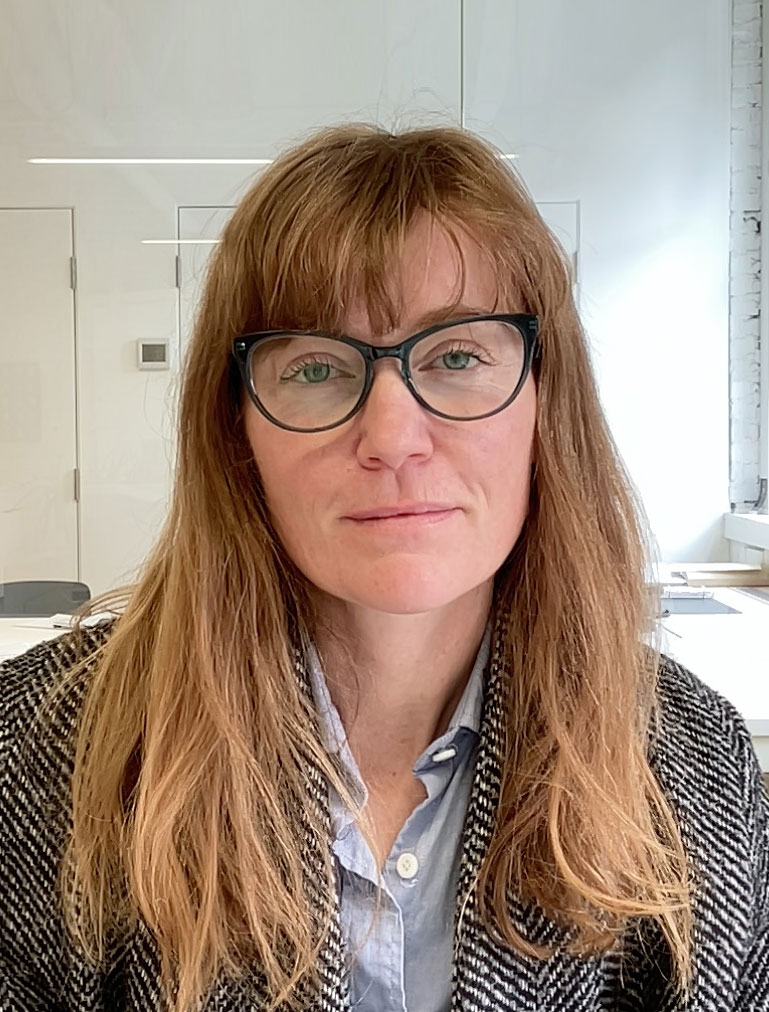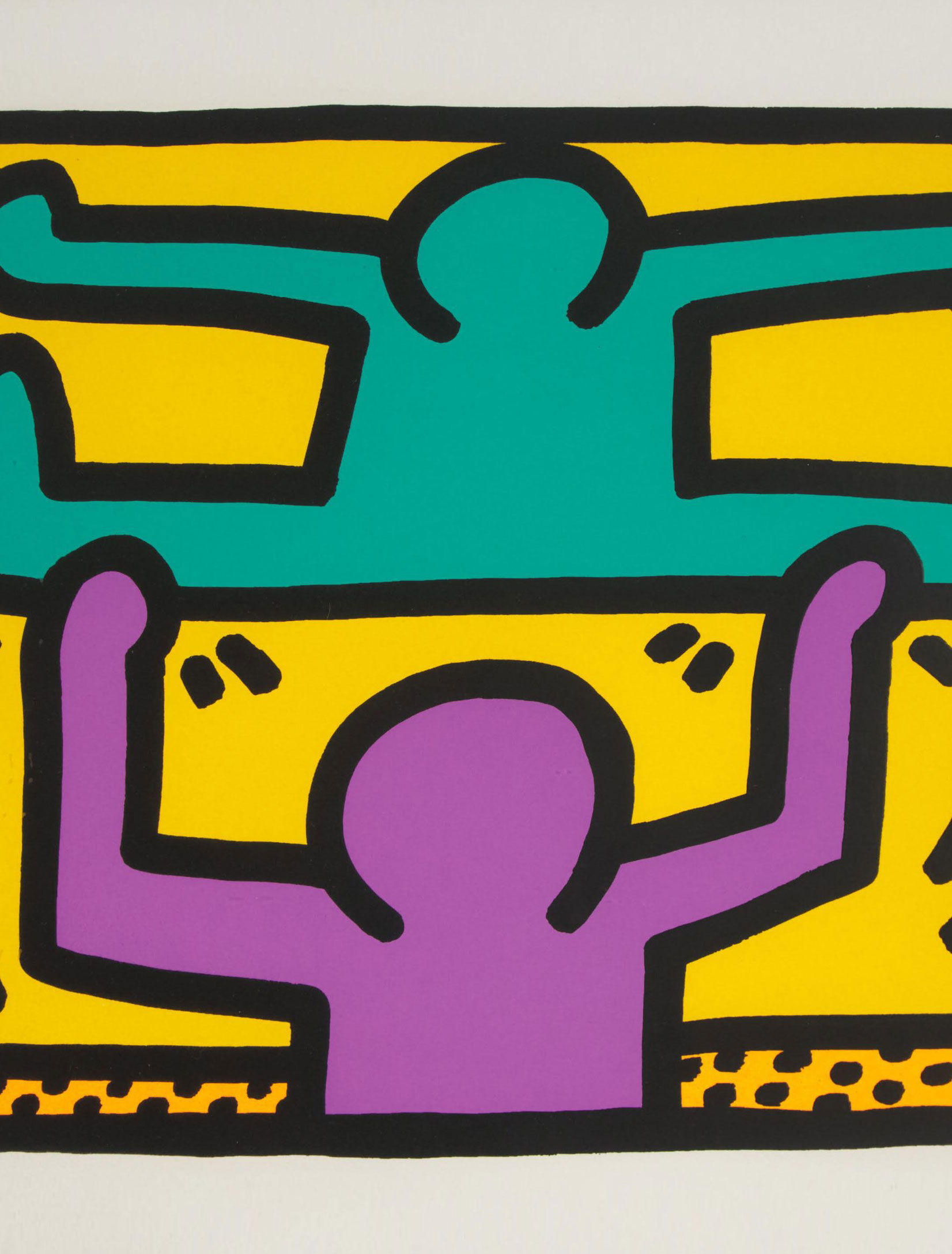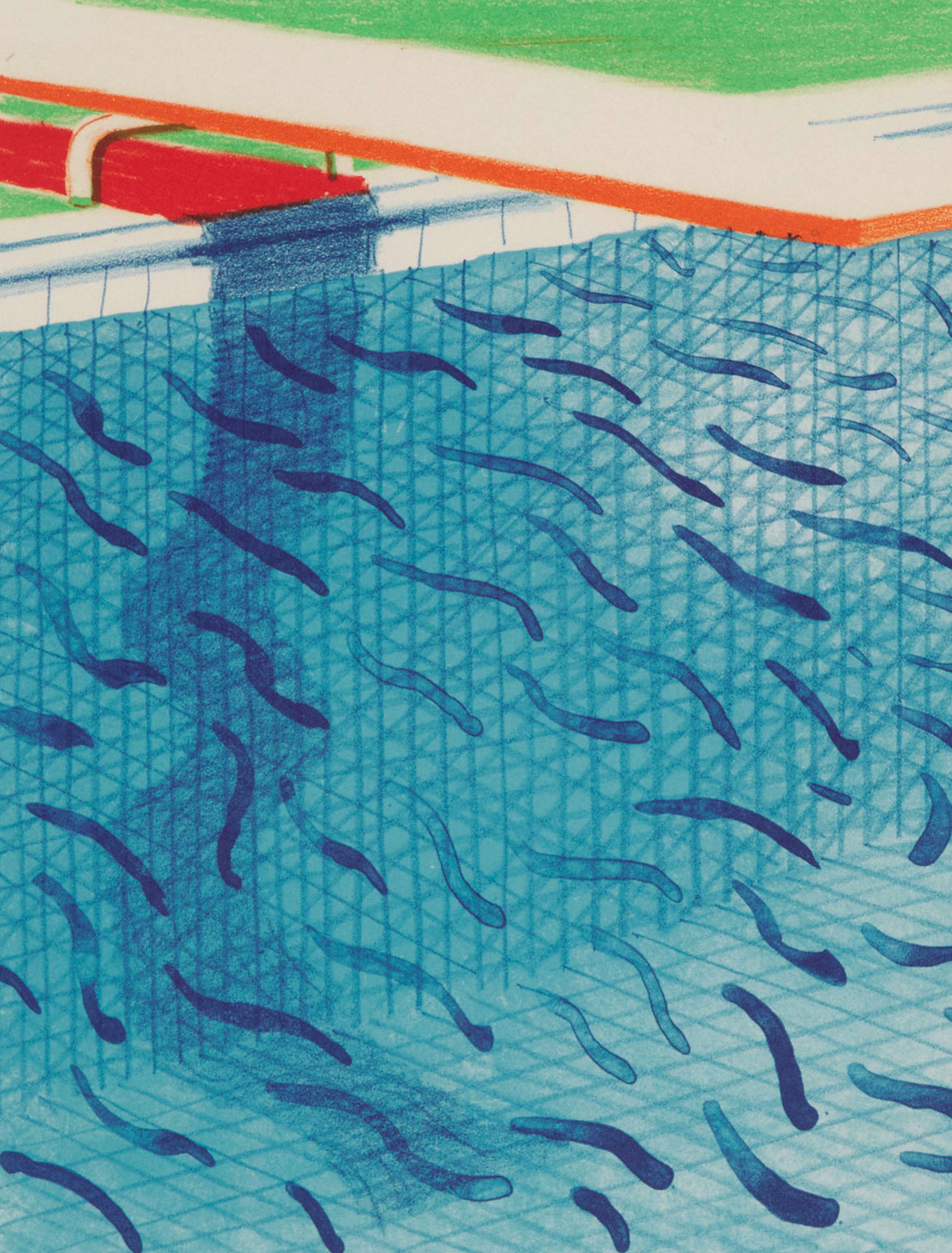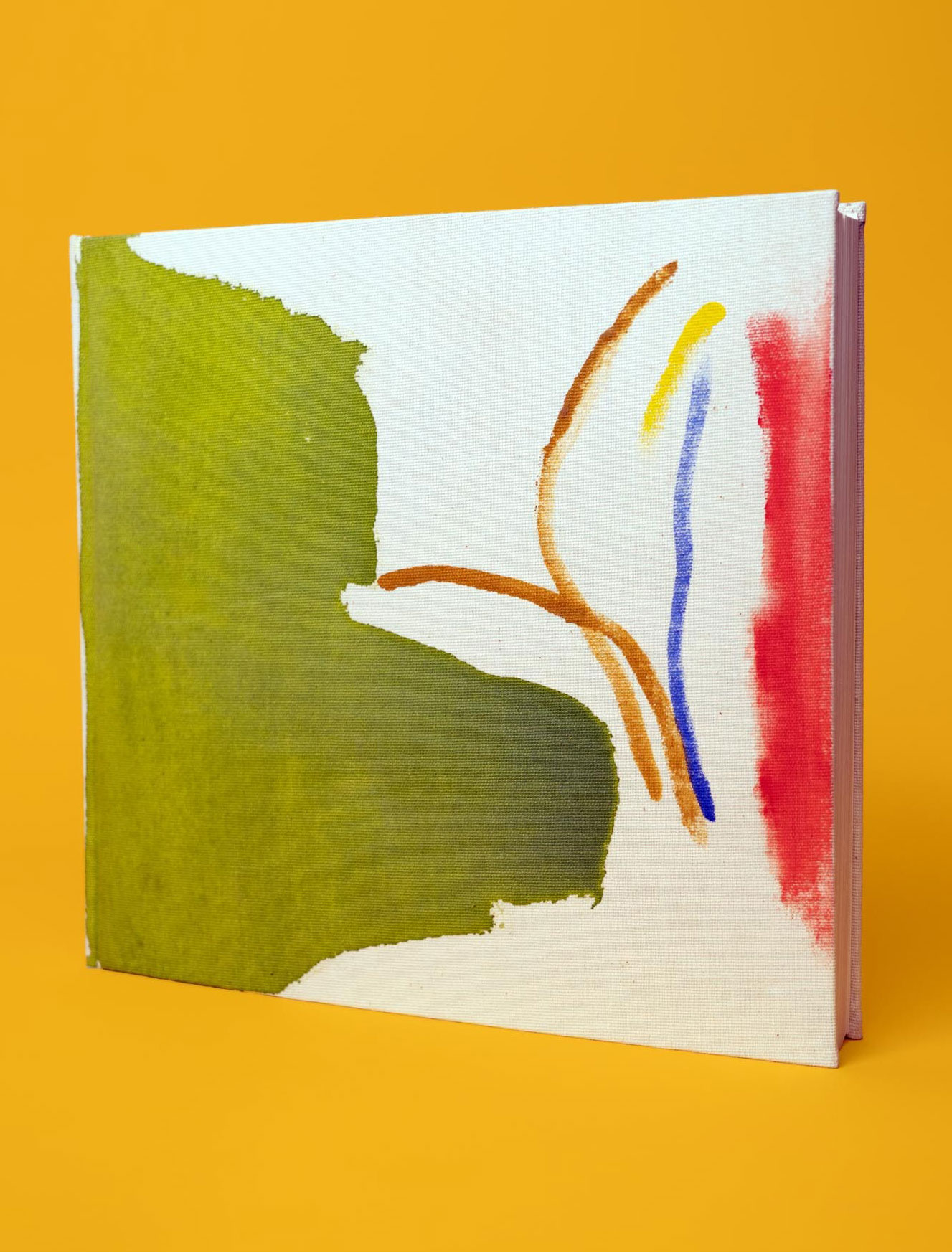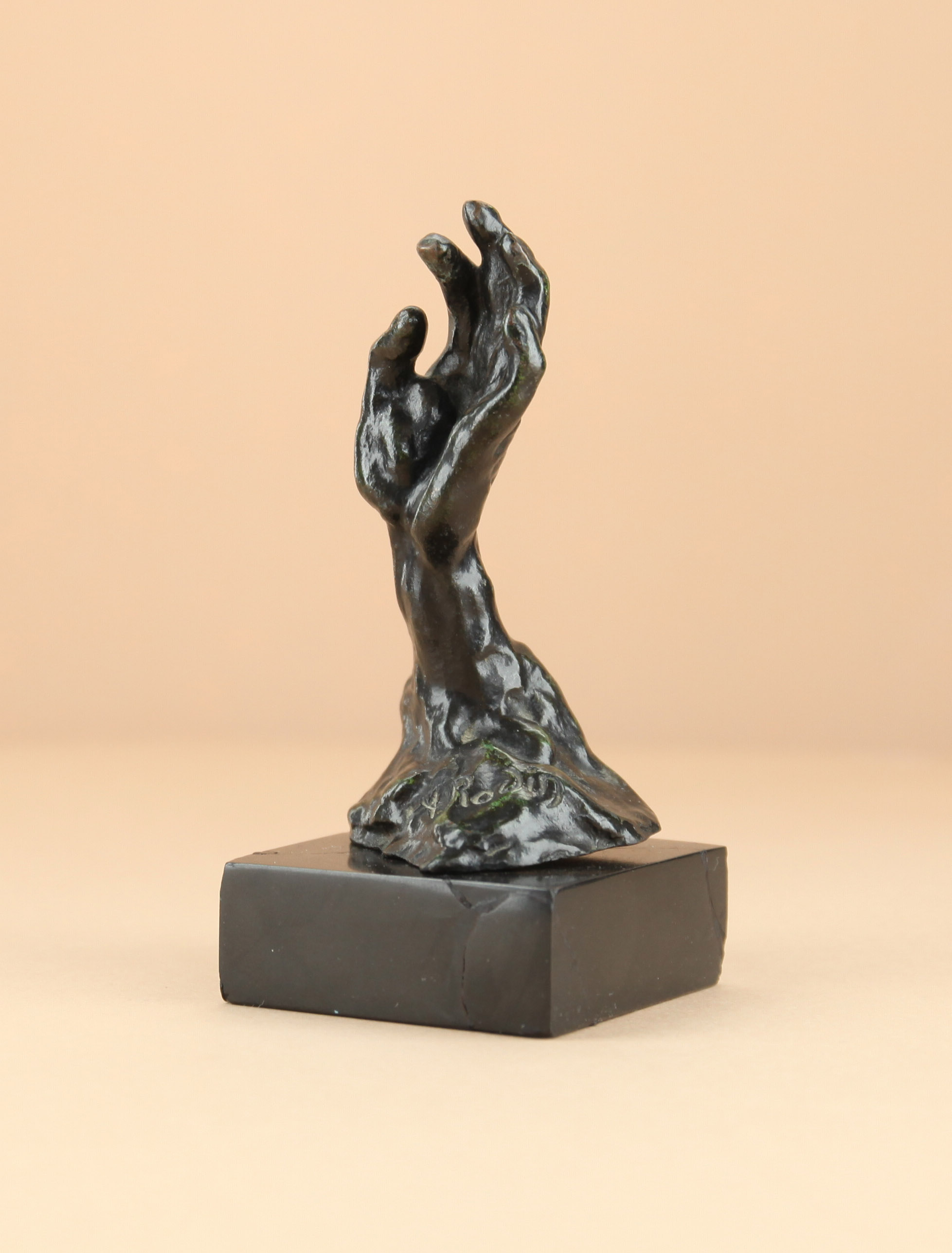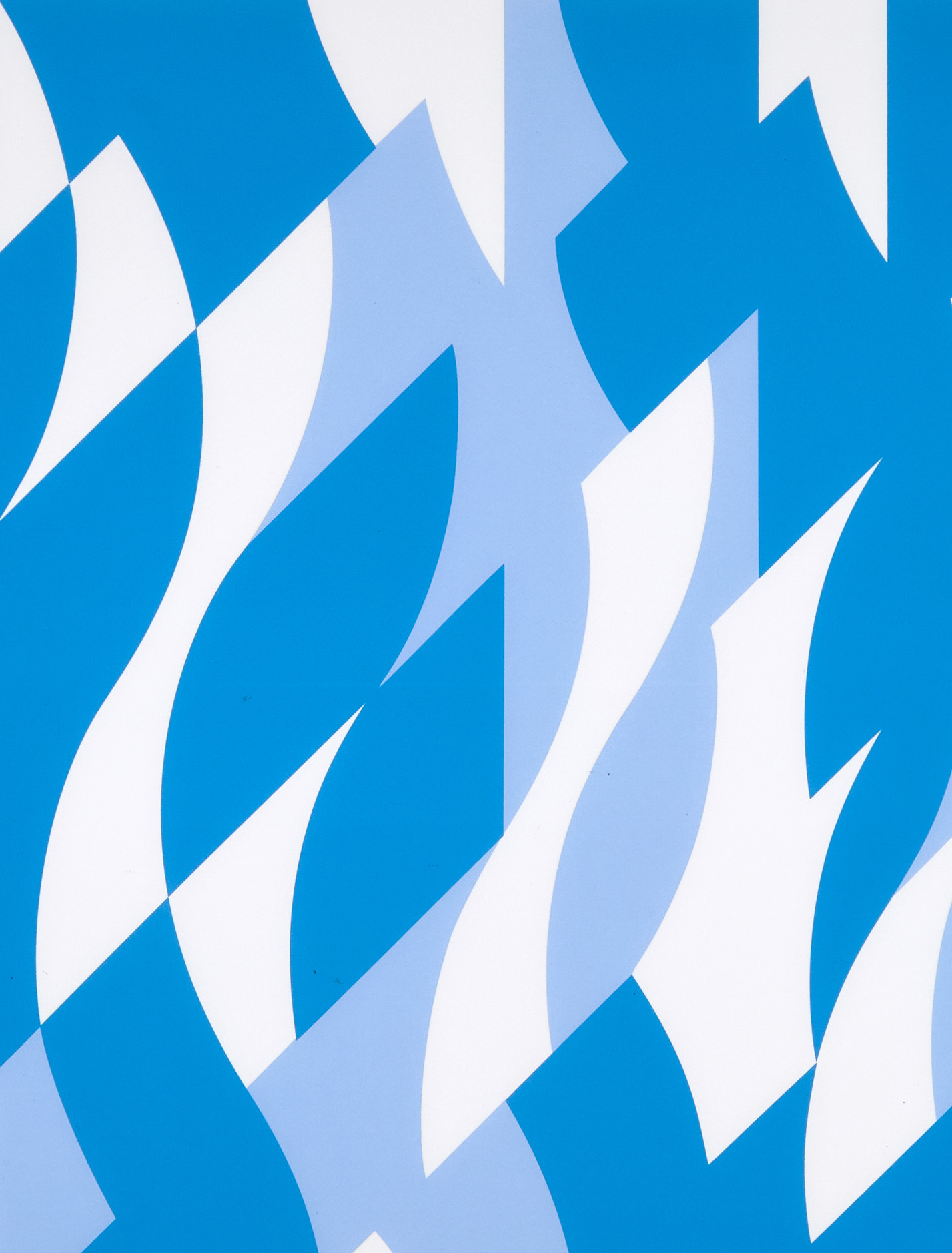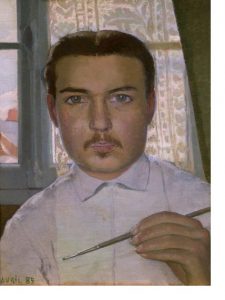
Painter, decorative artist and writer, Maurice Denis (1870-1943) was one of the leading lights of the French art world around the turn of the 20th century. An important figure in the transitional moment between Impressionism and modernism, Denis’ work and theories would prefigure Cubism, Fauvism, and abstract art, though his own trajectory would find him return to Neo-Classicism by the end of his career. Waddington’s is pleased to offer Femmes sur le Balcon, Esquisse I (Women on the Balcony, Sketch I), ca. 1913, an important and very personalized portrayal of the artist’s daughters and their friend on the balcony of their home. This painting, lot 61, is a highlight of our major International Art auction taking place November 20-25, 2021.
EARLY LIFE
Denis’ parents had moved to Granville, a coastal town in Normandy, France to escape the Franco-Prussian War; Denis would be born there on November 25, 1870. His parents, a railway official and a seamstress, would relocate to the Parisian suburb of Saint-Germain-en-Laye, when Denis was still a child. Denis’ parents were staunch Catholics, a faith Denis would stay deeply connected to throughout his life.
As a young boy, Denis began visiting churches and cathedrals. Inspired by the work of Fra Angelico, he began taking drawing lessons and sketching the Old Master works in the Louvre’s collection. Education was important to the Denis family, who sent their son to the prestigious Lycée Condorcet, where he would meet Jean-Édouard Vuillard and Ker-Xavier Roussel. In 1888, Denis would drop out of the Lycée to study with painter Rodolphe Julian at his Académie Julian. In 1889, Denis would then enroll in the famous École des Beaux-Arts.
FORMING LES NABIS
During this period, Denis would become inspired by the Symbolist movement, particularly the work of Pierre Puvis de Chavannes and Paul Gauguin. Gauguin had mentored one of Denis’ friends, the painter Paul Sérusier, in the artist colony and village of Pont-Aven in Brittany. Gauguin was said to have told Sérusier “How do you see this tree? It is green. So put green, the most beautiful green on your palette; and that shadow, especially blue? Don’t be afraid to paint it as blue as possible.” Under his influence, Sérusier painted a landscape on a small wooden panel.
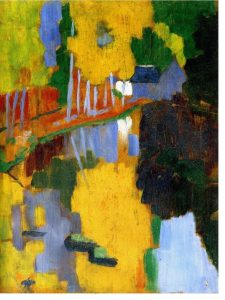
Denis and his compatriots saw Sérusier’s landscape as nothing short of a revelation, and in 1888, decided to form a movement around this new aesthetic vision. They would call themselves “Les Nabis,” deriving from the Hebrew term for ‘prophet,’ and would refer to Sérusier’s painting as “The Talisman.” In the words of Sérusier, “painters since the Renaissance have worked to complicate the profession,” and so the Nabis took it upon themselves to revitalize the artform.
The Nabis group would include Denis, Sérusier, Vuillard, and Roussel as well as Pierre Bonnard, Félix Vallotton and others totalling a dozen, many of whom were fellow students at the Académie Julian. The members shared a desire to reject Impressionism’s naturalistic, descriptive tendencies, preferring to focus instead on spiritual and emotional aspects. They believed that art should not be a faithful depiction of nature, but rather an expression of symbols and metaphors created by each individual artist. Gauguin was greatly admired by the Nabis, particularly his Symbolist works, and Denis would also travel to Pont-Aven to learn from him. Japonism, then at the height of its popularity in Europe, would also influence the group, as would the decorative arts.
Though their styles varied greatly, the Nabis’ style was characterised by bold blocks of colour and was known as synthetism. In addition to his experimental paintings, Denis would become the group’s chief theorist, producing a manifesto in 1890 titled “Definition of Neo-Traditionalism.” Enclosed within the article was Denis’ most oft-quoted pronouncement, a declaration which is said to prefigure much of the modern art which was to follow: “Remember that a picture—before being a war horse or a nude woman or an anecdote—is essentially a flat surface covered with colours assembled in a certain order.”
Though interested in the flat patterning of colour, Denis would not pursue nor directly encourage pure abstraction. Denis’ work remained informed by his Catholic faith, and continued to veer towards religious iconography. The semi-mystical language used by the Nabis appealed to Denis, though his Catholic-inflected themes differed from the looser, more spiritual inflections of his peers. Indeed, he was nicknamed “le nabi aux belles icônes” (the prophet of the beautiful icons) by other members of the group.
NABIS NO MORE
Denis would marry the musician Marthe Meurier in 1893. Marthe would be one of Denis’ preferred subjects—along with love, religion and the soul—for his entire career. The two would remain married for 26 years, until Marthe’s death in 1919.
Around the same period, Denis became deeply interested in the decorative arts, perhaps echoing the burgeoning Art Nouveau movement that was ascendant at the time. Denis began to accept commissions to decorate both private homes and public buildings, including churches. As his art began to entwine with architecture, so too did architectural details enter his artistic output, with Denis experimenting with designs for carpets, ceramics, stained glass, screens and fans. He began illustrating as well, producing images for Claude Debussy’s musical scores and Paul Verlaine’s poetry, including Sagesse, among other projects.
Denis would take several trips to Italy in the mid to late 1890s, where he would delve further into the art of the Italian Renaissance. His own art and intentions had begun to drift away from that of his fellow Nabis—a letter to Vuillard, that waxed poetic about the superiority of the work of Raphael and classical art, was met with disapproval and surprise. In Italy, Denis reconnected with André Gide, a French writer and friend, who also believed that art needed to return to classical ideals. Both men believed in Neo-Classicism, seeing France as “the natural heir to Greek and Roman antiquity.” Denis’ new beliefs aside, by 1900, the Nabis group had drifted apart, as the artists began pursuing their own mature interests and artistic visions.
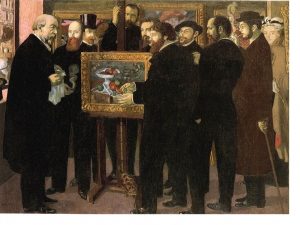
NEO-CLASSICISM AND RELIGIOUS REVIVAL
Denis’ Italian influences—particularly 14th and 15th century fresco work—began appearing in his own art, evidenced by a new insistence on traditional perspective, precise figuration, and subject matter. The work of Paul Cézanne would also deeply touch Denis, who viewed Cézanne as “the prophet of a new Classicism.” Cézanne’s emphasis on compositions based on concrete, sculptural forms impressed Denis, as did the former’s rejection of Impressionism’s focus on chromatic interplay. One of Denis’ most famous compositions, “Homage à Cézanne” (1901)—depicting the artist himself alongside other devotees gathered around one of Cézanne’s still lifes—exemplifies both a Renaissance perspective as well as the clear influence of the French master.
The First World War period would be difficult for Denis on a personal level, beginning with the death of his father in 1914. Denis would end up buying the building which had hosted the local hospital of Saint-Germaine-en-Laye. He filled it with frescoes and decorative elements, a task which took him 14 years. In 1919, Marthe would pass away, prompting Denis to paint a chapel in her memory. Denis would remarry in 1922, choosing Elisabeth Graterolleore, whom he met on a trip to Italy, as his bride.
In 1919, Denis and Georges Devallières founded les Ateliers d’Art Sacré (“Workshops of Sacred Art”), dedicated to reviving and renovating holy buildings and their accompanying decorative elements. In addition, the two would endeavor to train a new generation of artisans in the craft of preservation and religious artistry. Distinct from the fervor of his early career, Denis’ religious work is often characterized by a less vivid palette and a more relaxed vision.
Unlike the push towards secularism that characterized the lives and work of many of his peers, Denis’ faith and belief in traditionalism would define him and help reinvigorate the genre of religious art in France. No longer a concern of the past, Denis’ efforts would place religious art in the vanguard of contemporary culture. Denis was able to fuse the rebellious, modernist push of his peers with the trajectory of classical Western art history. In an age of progressive values, Denis cleaved to what he saw as the timeless beauty of tradition.
Les Ateliers d’Art Sacré would disband in the mid-1930s due to a lack of commissions, though Denis would continue to paint murals for secular buildings. Not one to slow down, Denis completed over 20 murals between 1916 and 1943—including the ceiling of the Champs Élysées Theatre in Paris and frescoes in the Palais des Nations in Geneva.
In addition to his artistic pursuits, Denis achieved significant notoriety for his art criticism—Denis would become one of Henri Matisse’ and Fauvism’s most outspoken opponents—as well as his writings about aesthetics and spirituality. Denis also taught, counting celebrated Polish painter Tamara de Lempicka as one of his students.
Denis was hit by a car in Paris in 1943, succumbing to his injuries en route to the hospital. His work is held by collections including those of the Musée d’Orsay in Paris, the Metropolitan Museum of Art in New York, the Hermitage Museum in St. Petersburg, the National Gallery of Art in Washington, D.C., and the Art Institute of Chicago.
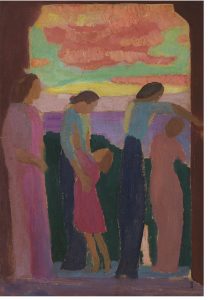
Oil on board. 15 ins x 10.4 ins; 38 cms x 26.5 cms. Estimate $50,000-$80,000
FEMMES SUR LE BALCON, ESQUISSE I
Waddington’s is pleased to be offering Denis’ 1913 painting, Femmes sur le Balcon, Esquisse I (Women on the Balcony, Sketch I) as lot 61 in our major International Art auction, November 20-25.
Claire Denis, the artist’s granddaughter and co-author of the “Catalogue raisonné de l’oeuvre de Maurice Denis,” identifies the location of this scene as the balcony of the painter’s house, “Silencio” in Perros-Guires (Brittany) depicting Denis’ daughters and a friend looking at the sunset. On the left is the eldest, Noële, born in 1896, the little one is Madeleine, born in 1906, and the others are probably Bernadette, born in 1899 (on the right) and Anne-Marie, born in 1901 holding her little sister. The tall woman in a black skirt is possibly a friend. The painting’s composition with the archway and flat depiction of the figures recalls the medieval frescoes of early Italian painters such as Giotto and Fra Angelico.
Mme. Denis states that the artist painted three oils of this subject. The final version is very similar but larger and painted on canvas. At the time Mme. Denis compiled her certificate for this lot in 2021, the final larger version on canvas, titled “Femmes sur le balcon,” ca. 1912, was held in a private collection at the Museum of Morlaix, France (Cat. N° 912.0003, illustrated in colour on her certificate as a comparison to this lot). The third version of this subject is registered as Cat. N° 912.0039. Mme. Denis was able to date this lot ca. 1913 instead of 1912, based on the date of a sketch appearing in a letter written on July 15, 1913 (Ms 8368). Mme. Denis has viewed this work in person and provided a letter of Authenticity to the present Private Collection, Cat. N° 912.0002 in the Catalogue raisonné currently in preparation by Madame Claire Denis.
ABOUT THE AUCTION
Our major International Art auction is offered online from November 20-25. The auction includes a diverse selection of original artworks from the Old Master period to the 21st century, including rare and important paintings, drawings, and sculpture. Featured are a number of artworks from significant estates and collections, including deaccessioned works from the Art Gallery of Ontario, the Beaverbrook Art Gallery, the Estate of W.A. Ross MacFadden, and numerous works from prestigious private collections that have not been on the market for decades.
Please contact us for more information.
FURTHER READING:
https://www.theartstory.org/artist/denis-maurice/life-and-legacy/#biography_header
https://www.britannica.com/biography/Maurice-Denis
https://www.oxfordreference.com/view/10.1093/oi/authority.20110803095710280
Related News
Meet the Specialist

Kristin Vance
Consignment Specialist
Communications / Marketing



